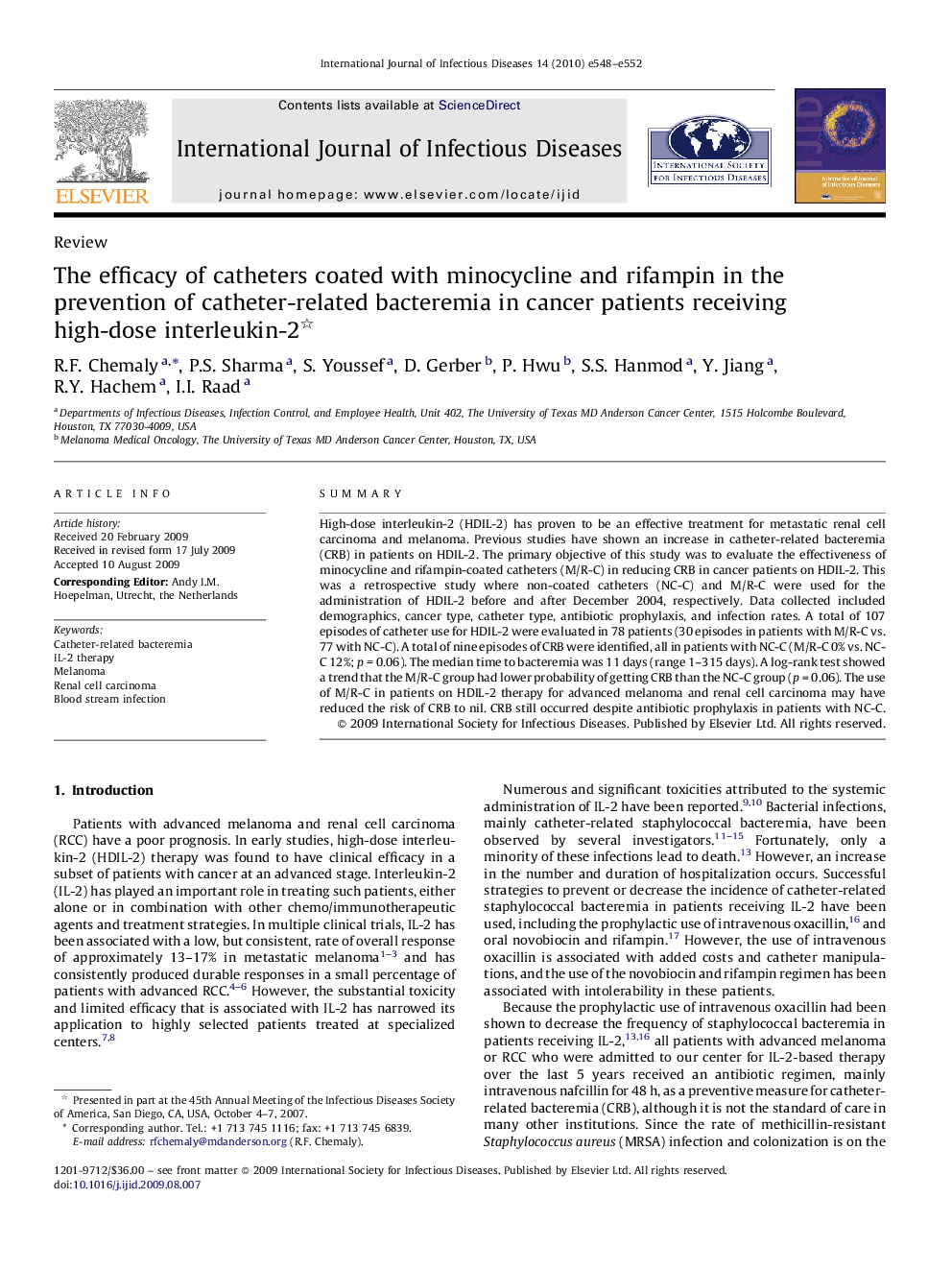| Article ID | Journal | Published Year | Pages | File Type |
|---|---|---|---|---|
| 3363410 | International Journal of Infectious Diseases | 2010 | 5 Pages |
SummaryHigh-dose interleukin-2 (HDIL-2) has proven to be an effective treatment for metastatic renal cell carcinoma and melanoma. Previous studies have shown an increase in catheter-related bacteremia (CRB) in patients on HDIL-2. The primary objective of this study was to evaluate the effectiveness of minocycline and rifampin-coated catheters (M/R-C) in reducing CRB in cancer patients on HDIL-2. This was a retrospective study where non-coated catheters (NC-C) and M/R-C were used for the administration of HDIL-2 before and after December 2004, respectively. Data collected included demographics, cancer type, catheter type, antibiotic prophylaxis, and infection rates. A total of 107 episodes of catheter use for HDIL-2 were evaluated in 78 patients (30 episodes in patients with M/R-C vs. 77 with NC-C). A total of nine episodes of CRB were identified, all in patients with NC-C (M/R-C 0% vs. NC-C 12%; p = 0.06). The median time to bacteremia was 11 days (range 1–315 days). A log-rank test showed a trend that the M/R-C group had lower probability of getting CRB than the NC-C group (p = 0.06). The use of M/R-C in patients on HDIL-2 therapy for advanced melanoma and renal cell carcinoma may have reduced the risk of CRB to nil. CRB still occurred despite antibiotic prophylaxis in patients with NC-C.
